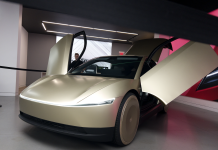Judy Lau
Staff Writer
Researchers at the University of California, Santa Barbara are developing a pediatric artificial pancreas that could make sleepless nights and high anxiety a thing of the past for children with type 1 Diabetes. UCSB professors Dr. Frank Doyle and Dr. Eyal Dassau are collaborating with researchers from Yale University to further this project.
With type 1 diabetes, the pancreas does not produce insulin, a hormone necessary to convert sugar and starches into energy needed for daily life. Type 1 diabetes is usually diagnosed in children and young adults, who make up roughly 5 percent of people with diabetes.
For parents of children with type 1 diabetes, the stress is amplified. Children have unpredictable eating habits and food preferences and spontaneous activity, which can cause glucose levels to drop dangerously low or high.
The protocols for diabetes management can vary by age. Adults and teenagers can predict their meals and mealtimes to deliver insulin subcutaneously about 15 minutes before eating to ensure that enough hormone has reached the bloodstream by the time they eat. This “pre-meal bolus” is a way to manage meal glucose control and allows insulin to be absorbed when the glucose arrives with the meal, mimicking the way a healthy individual’s body regulates sugar.
However, in young children, because of the unpredictable eating habits and higher sensitivity to insulin, the hormone must be delivered after the meal, causing a delay and chance of a swing to the low extreme of the blood sugar range.
“We want to alleviate parents’ fears about their child’s glucose level,” said Dassau, a research engineer in UCSB’s Department of Chemical Engineering and principal investigator of this study. “As a result, parents can get a full night’s sleep without having to worrying through the night.”
Over the past 12 years, Doyle, director of the Institute for Collaborative Biotechnologies at UCSB, and his research group have developed the artificial pancreas, a combination of sensor technology and an insulin pump that is able to read levels of glucose and inject the appropriate amount of insulin based on the patient’s characteristics.
“Our goal is to model predictive control,” said Dassau. “To do this, we would use old data from the body and integrate it with the patient’s characteristics and activities in order to predict the levels of glucose and allow them to know when to inject insulin.”
In collaboration with the William Sansum Diabetes Research Center in Santa Barbara, in local and international clinical trials, the artificial pancreas has been refined based on input from engineering, clinical, and behavioral aspects of diabetes management.
“We have already proven in clinical trials that the artificial pancreas can handle unannounced meals and physical activity,” said Dassau. “We have developed safety algorithms that can be adjusted for young children. As children get older, the algorithm can be adjusted and refined accordingly.”
According to the researchers, the first phase of research for the pediatric artificial pancreas involves data collection. The second phase involves developing and clinic testing of an advisory system and alert system for parents that provides insight on strategies for management of their children’s conditions in general. At every phase, the researchers will conduct repeated evaluations and refinements to the algorithm as well as to the alert of advisory systems.
“The goal is to give parents and their children the ability to be involved in the management of diabetes, while safeguarding against extremes,” said Dassau. “Snacking, unscheduled naps, or spontaneous activities will no longer result in increased stress levels for parents and children.”
In future studies, the artificial pancreas testing will move to an outpatient component, where patients are given free reign over what they do and eat, but at locations near the clinic and with supervision from technical staff.












